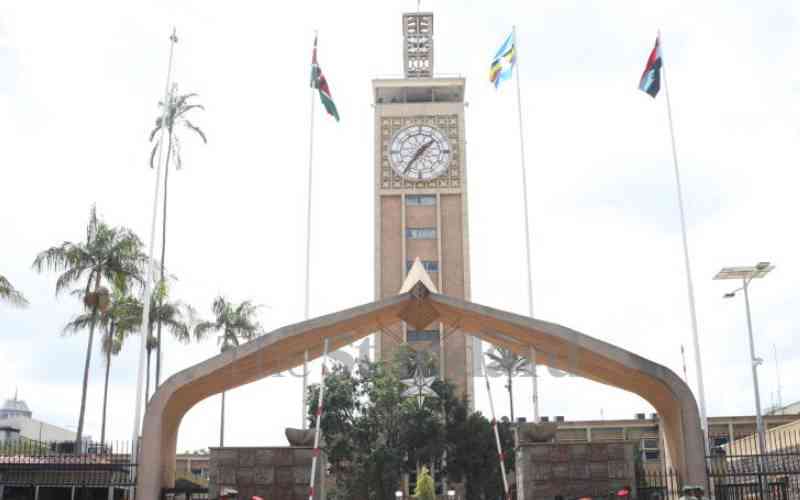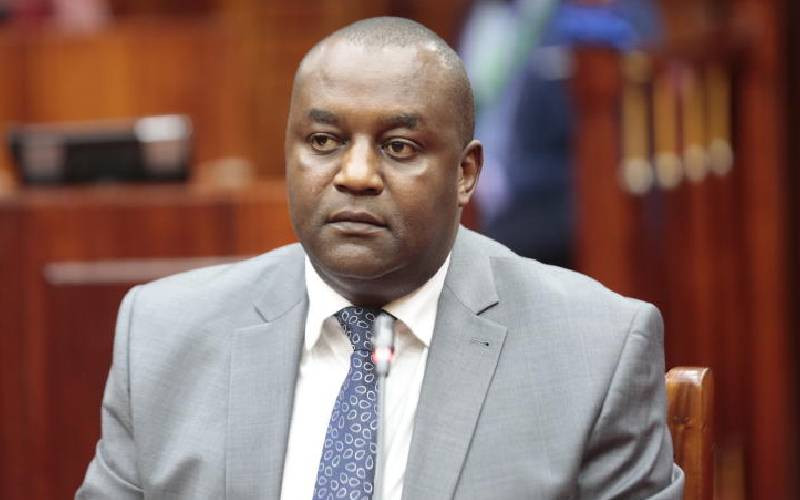Kenya is still fairing poorly in its bid to meet the two thirds gender rule, especially in plum appointive and elective office, as stipulated by the Constitution.
While appreciating that steps have been made to include more women in leadership positions of public office, National Gender and Equality Commission (NGEC) chair Winfred Lichuma says the country would, on a scale of one to 10, score four on this aspect.
Lichuma’s remarks come in the wake of appointments recently made to the chairmanship and membership of boards of State corporations that saw women fair poorly.
An overview of data gleaned from recent appointments of chairs to the boards shows only five women were picked to occupy the top position of 31 appointments made. The appointments were contained in gazette notices dated June 17 and 24, 2016.
Those appointed as board chairs were Lucy Yinda (Street Families Rehabilitation Trust Fund), Dr Paula Kahumbu (National Museums of Kenya Board), Deborah Bubi (Youth Advisory Board) and Angeline Siparo (National Aids Control Council). Ms Charity Kisotu was appointed to chair the Insurance Tribunal.
Rapid assessment
A rapid assessment exercise conducted by the NGEC in December 2015 to establish representation in the 153 State corporations boards by gender, youth and persons with disabilities, is equally telling.
According to the data, only 17 women (11.1 per cent) occupied positions of chair in State corporation boards at the time, compared to 136 men (88.9 per cent). Out of 1,428 board members, 384 (26.8 per cent) were women compared to 1,044 men (73.2 per cent).
Ideally, the board membership should have had at least 476 women, to meet provisions of Article 27 of the Constitution, which provides that not more than two thirds of the members of elective or appointive bodies shall be of the same gender.
The youth and persons with disabilities performed even worse, with only six youth (0.42 per cent) sitting on the 153 State corporation boards assessed at the time. The number of persons with disabilities sitting on such boards was pegged at 13 (0.9 per cent), while those serving as chair to boards of state corporations stood at one each for the youth and persons with disabilities.
Overall, of the 153 corporations assessed, only 11 (seven per cent) met the 33 per cent and above gender requirement threshold.
Lichuma, however, cites challenges in auditing State corporations to establish their compliance with the gender principle. “The government has not declared the total number of parastatals, which would make it easier to determine whether they, as a whole, meet the gender principle,” she says.
Lichuma says while it is possible to question whether the gender principle is being met by looking at the board chairs, such a deduction may be misleading without considering a board’s full membership. “Our finding is that where there is vagueness in terms of representation, people aren’t willing to comply,” she says.
Of all the arms of government, the Judiciary takes the lead in meeting the gender threshold in its appointment of magistrates and judges. This is in stark contrast to the Cabinet, National Assembly and Senate where the number of women leaders remains wanting.
Plum positions
Stay informed. Subscribe to our newsletter
Up to 230 of the 462 magistrates countrywide are women, with at least 25 women serving as chief magistrates, compared to 21 men. Of the 43 senior principal magistrates, 16 are women and 27 are men.
The position of resident magistrate also has more women, at 98, compared to 63 men. Of the total 26 judges at the Court of Appeal, eight are women, while 42 of the 105 High Court judges are women. The retirement of Supreme Court judge Justice Kalpana Rawal leaves only one woman, Justice Njoki Ndungú, out of four men in the country’s highest court.
An analysis of 16 Constitutional Commissions and Independent Offices shows at least six of these offices are headed by women.
Although the number of women in the National Assembly is the highest since the country’s independence, it still fails to meet the gender threshold. Recent attempts by Parliament to pass legislation that would pave way for implementing a mechanism that would realise the two thirds gender rule flopped after failing to raise the requisite numbers.
Currently, the number of elected women MPs stands at 16 out of 290 constituency legislators in the House. Five women occupy the 12 nomination slots shared by political parties in the House, in addition to the 47 seats occupied by County Women representatives. This puts the total number of women legislators at 68 out of 349. No woman was elected Senator in the 2013 general election. There are, however, 16 women nominated Senators.
At least five of the 18 Cabinet Secretaries are women, as are 14 out of 41 Principal Secretaries.
 The Standard Group Plc is a
multi-media organization with investments in media platforms spanning newspaper
print operations, television, radio broadcasting, digital and online services. The
Standard Group is recognized as a leading multi-media house in Kenya with a key
influence in matters of national and international interest.
The Standard Group Plc is a
multi-media organization with investments in media platforms spanning newspaper
print operations, television, radio broadcasting, digital and online services. The
Standard Group is recognized as a leading multi-media house in Kenya with a key
influence in matters of national and international interest.
 The Standard Group Plc is a
multi-media organization with investments in media platforms spanning newspaper
print operations, television, radio broadcasting, digital and online services. The
Standard Group is recognized as a leading multi-media house in Kenya with a key
influence in matters of national and international interest.
The Standard Group Plc is a
multi-media organization with investments in media platforms spanning newspaper
print operations, television, radio broadcasting, digital and online services. The
Standard Group is recognized as a leading multi-media house in Kenya with a key
influence in matters of national and international interest.







